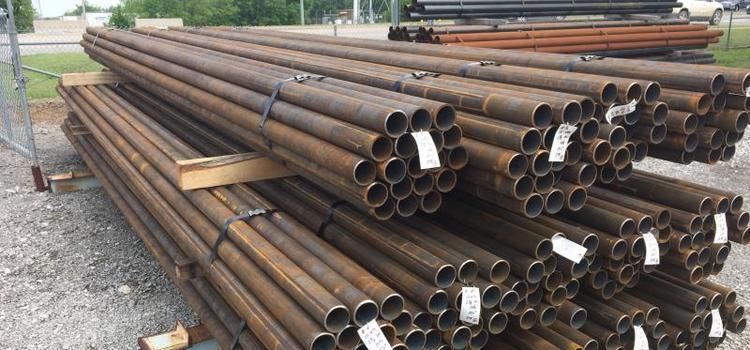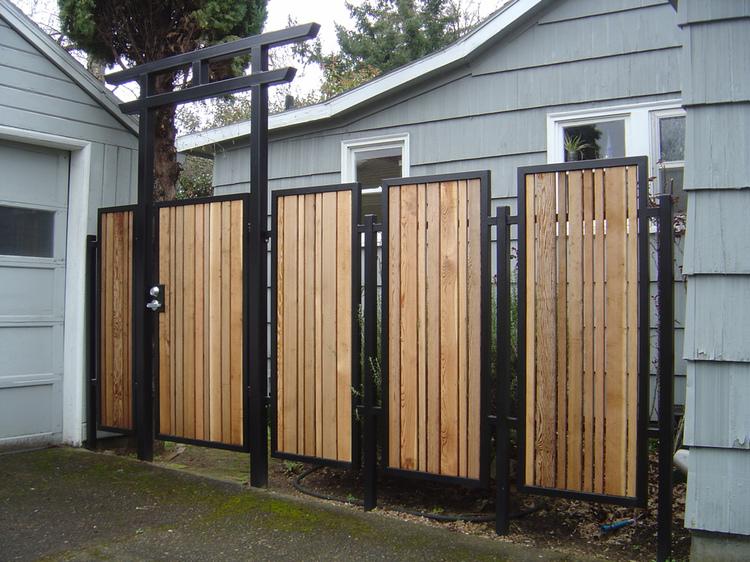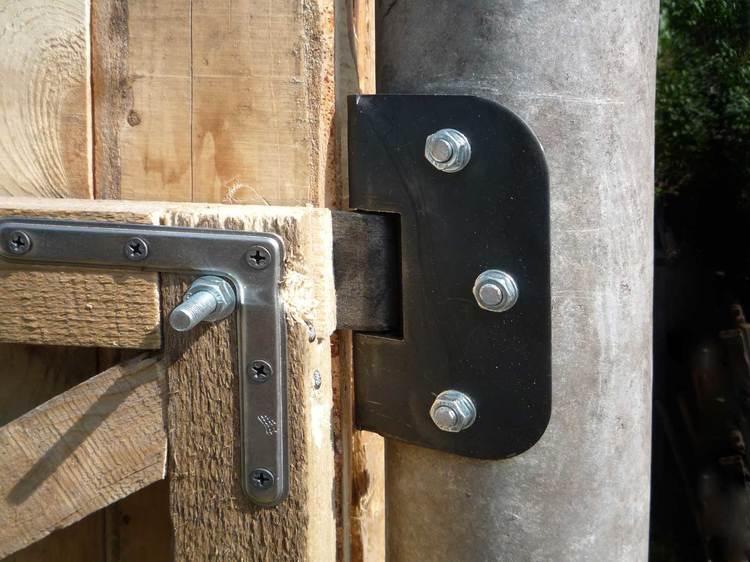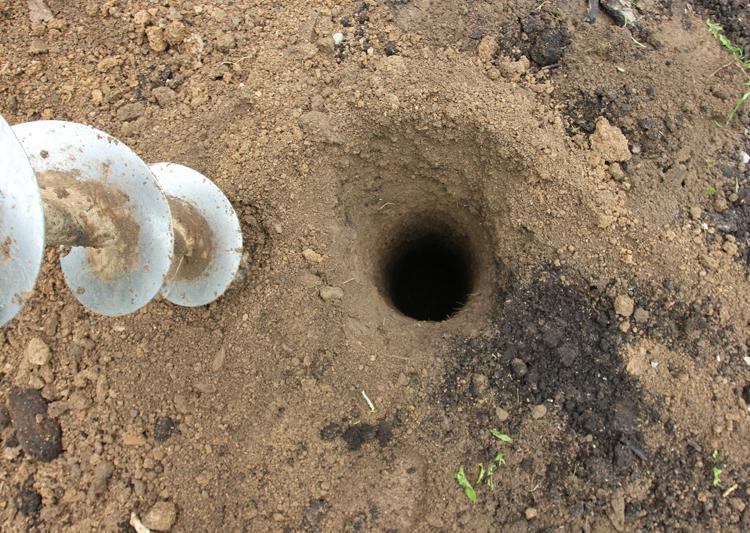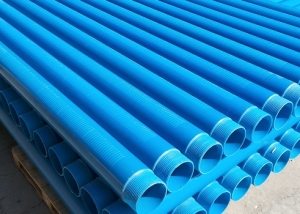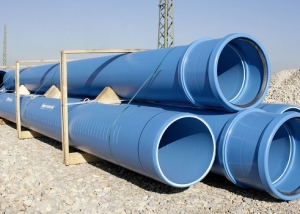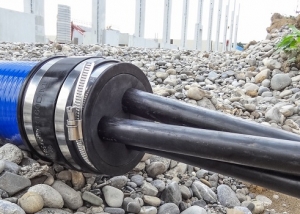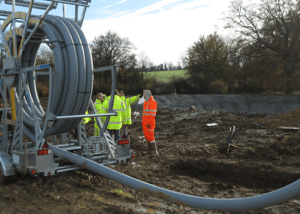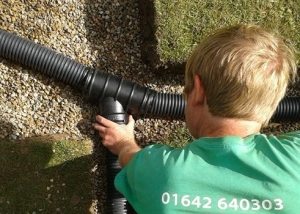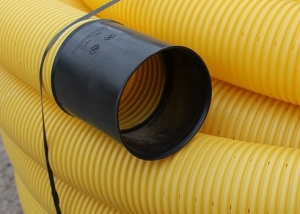Today on the market there is a wide variety of pipes for fence posts. Products vary in materials, characteristics and application conditions. Each pipe, made of metal, asbestos cement or plastic, can be used for poles and be an element of the fence zoning the garden plot, really enclosing it or complementing the landscape design of a country house. The most stable and durable is considered asbestos-cement option.
Content
Basic materials for fence posts
There are three types of structures: asbestos-cement, metal and plastic pipes for the construction of the fence. The first type is perfect for installing netting and joining spans of a wooden fence. Pillars are mounted using the concreting method. The advantages of using asbestos-cement elements include low cost, withstanding heavy loads and almost complete resistance to rotting and corrosion.
Note! The disadvantages of such products are their fragility, which complicates the transportation and installation of structures, as well as the possibility of violating the integrity of the ingress of water.
Pipes made of metal are conveniently used for fence from corrugated board and fastening fencing elements by welding. They are durable (service life of 20 years), tough, durable, technologically advanced and withstand significant loads.
The last type of pillars is suitable for plastic and wooden structures, mesh-netting. The advantages of the elements include frost and corrosion resistance, the safety of the external pitchfork and characteristics during prolonged exposure to ultraviolet radiation.
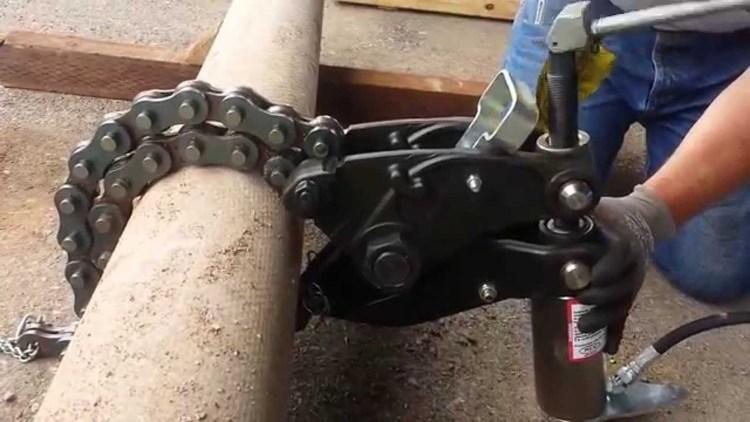
For an easy fence, you can take asbestos-cement pipes, but because of their fragility, you need to work with them carefully
Product Dimensions
The breadth of the assortment of tubular products that can be used for fence posts allows you to choose the most suitable product in terms of properties and characteristics. In the general case, structures with length parameters from 2.5 to 3 meters, diameters from 50 to 150 mm and wall thicknesses from 3 to 6 mm are used.
For fencing with a height of one and a half meters without a foundation, you can take elements with a section of 60x30x2, 50x30x2 or 50x50x2 millimeters. Such dimensions make it possible to withstand the load of a metal structure when pouring (point) pillars. If the fence is with a foundation, then use products 60x40x2 or 60x60x2 3 meters long, one of which must be deepened into the ground.
There are two types of round metal pipes for rolling:
- seamless hot-rolled (in accordance with GOST 8732);
- seamless cold rolled (in accordance with GOST 8734).
The first type is available with an outer diameter of 25-426 mm, a wall of 2.5-20 mm, an unmeasured length of 4.5-12.7 m; the second - with a cross section of 8-76 mm, a wall thickness of 1-8 mm, an unmeasured length of 1.3-11.7 m. A fence of asbestos-cement pipes can be built on the basis of standard elements with a length of 3950, a thickness of 9 and a diameter of 118 millimeters.
How to sheathed concrete pipes
Metal poles can be used for different types of fences.The most commonly used materials for cladding are:
- wood;
- corrugated board;
- Rabitz;
- forged fence.
The wooden component of the fence is not as durable as the metal. Over the entire life cycle, it may require repeated replacement. However, such a fence is cheap and environmentally friendly, so in a large number of cases the choice of a tree is justified. The mesh netting has a cellular structure and can be plastic or metal. The first type is not always strong and reliable, but the second is very durable. Of the disadvantages of using such a fence is a complete overview of the site.
Note! A fence with wrought iron elements looks presentable and beautiful. It is much more reliable than a grid and can be combined with different materials.
Decking (profiled steel sheet) is an economical and durable material. It is characterized by increased lateral stiffness, since it has a corrugated complex surface.
The nuances of installing pipes for the fence
The installation of fence posts is usually started with corner elements, after which intermediate ones are mounted. In this process, the soil plays an important role:
- with non-porous, preparation of holes is not required;
- with heaving - well drilling is necessary.
In the first case, it is enough to hammer a pillar into the ground to a depth of 1.5-2 meters. Non-porous is a type of soil that is not subject to frost heaving (i.e., an increase in volume). In the second case, the process is more time-consuming, since the use of a manual drill is required. To facilitate the work, you can pour water into the hole for 20 minutes.
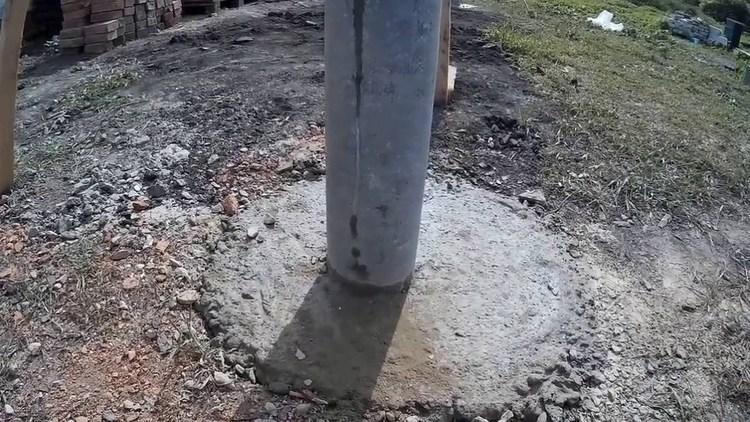
For reliability, the supports should be poured with concrete, for this the hole should be wider than the pipe itself
An effective way to install asbestos pipes on heaving soil is to install without using cement mortar. To do this, a hole is drilled that is several times larger than the diameter of the column, a holder is installed, and the free space is filled with rubble and rammed. This provides natural drainage that diverts pressure from the entire structure.
When installing fences on metal pipes, it is important to consider the following nuances:
- the distance between the elements is not less than 2-2.5 m;
- the size and length of metal poles is selected depending on the chosen casing and the size of the recess in the ground.
Observing the specified distance, you can facilitate the process of attaching the skin. In addition, it is provided with such rigidity at which the fence is able to withstand gusts of wind. Products with a diameter of 5 cm are well suited for corrugated board, for the organization of a door (entrance) - more reliable and powerful poles with a cross section of at least 10 cm.
Stages of installation of asbestos-cement columns
The initial stage of installation of asbestos-cement pillars is the construction of the foundation. In this case, the distance between them must be determined in advance (the best option is 200-300 cm). Further, holes are drilled in the soil so that their diameter exceeds the pipe diameter by at least 2 times, and the depth is 200-300 mm. The bottom of each of them is concreted with mortar or isolated with roofing material.
Note! The waterproofing of the holes is a prerequisite for ensuring a long service life of the structure.
At the next stage, a sand and gravel pillow is poured. The sand is densely compacted and an asbestos-cement pipe is installed on it. Its underground part is poured with a concrete layer 200-300 mm thick, which will increase the stability of the holder. After a few days, when the cementing is completed, you can proceed to the lining.
The lining is attached to the supporting beams (metal or wooden), and they are attached to the pillars. For this, the required holes are drilled in the asbestos holders.The connection is made by wire or special clamps, a wooden beam is attached with ordinary screws.
Features of plastic fencing
Plastic fences have a long service life. Such a fence does not require special maintenance, is quickly mounted and is available in a wide range of sizes of components. Columns for fences made of polyvinyl chloride (PVC) never rust, retaining its original appearance. The cost of structures is lower than metal counterparts.
The most important advantage of such fences is their quick (in a few hours) installation. Plastic poles are securely fixed to the concrete foundation with anchor bolts. Next, horizontal rails are mounted on them, and plastic panels on them.
Products are environmentally friendly, with the complete exception of burnout and moisture resistance. PVC poles can withstand not only plastic, but also wooden sections, as well as some metal parts of the fence. If pipes are used as supporting elements, then they must be durable, long and have a high compression ratio. The most popular are products with a maximum diameter of 150 mm, a wall of 4 mm, and a length of 3 m.
How to install a metal pole
The method of mounting pillars of metal is similar to other processes of organizing the bearing base. First, the territory is marked with the designation of the locations of the supporting elements of the fence. At the marked points, recesses are dug / drilled. Next, a metal pole is installed in the cavity.
Note! At the same time, tamping the earth is not required, since the main cementing component will be cement mortar, which will help to reduce wind load by an order of magnitude.
If the soil is very loose, then before installing the pipe, you can pour a certain amount of sand into the hole, fill it with water, and compact it well. Each post must be checked with a level for evenness. To prevent the structure from falling or skewing before the cement hardens, it must be supported on two sides with wooden beams.
To align the intermediate holders for the fence in height, a cord is stretched along the top, which is fastened to the end elements with its ends. When the poles are at the same level, crushed stone should be poured into each pit, after tamping - coarse sand, which is poured with water and again carefully rammed. At the final stage, the remaining cavity is filled with concrete mortar.
Choosing pipes for poles is necessary with an understanding of the task of fencing. A variety of materials and sizes of structures allows you to create a fence that performs not only the protective function of the territory, but also complements the exterior of the house.
